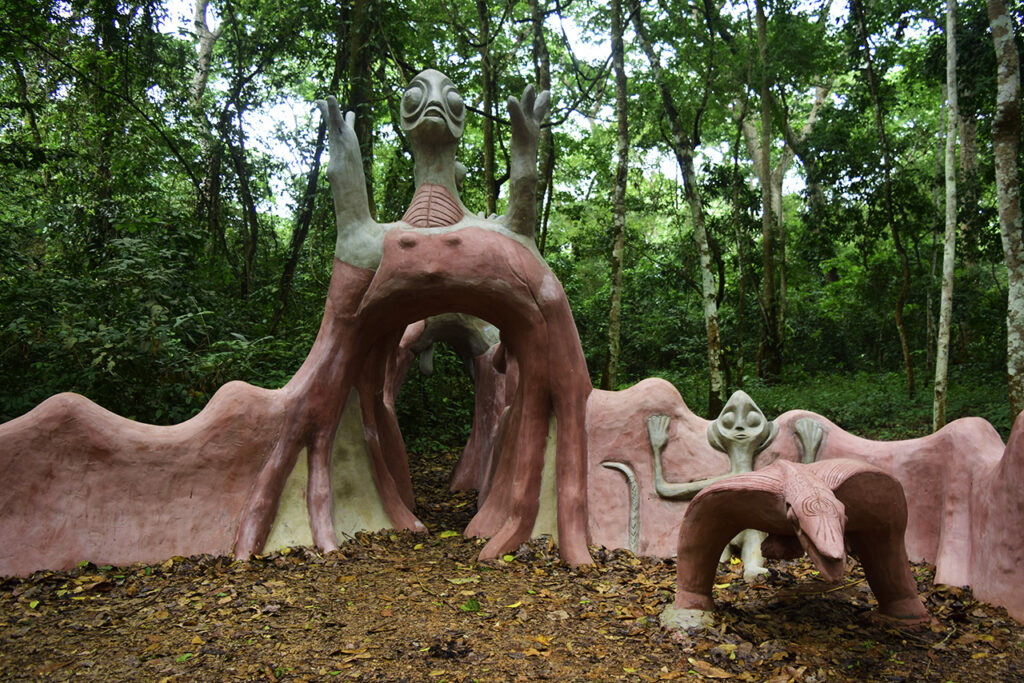When Osun Osogbo is mentioned, the first significant reaction that comes with the name is the historical Osun Osogbo festival and the excitement of people towards making their request known to the goddess of the river. The Osun River has been in existence since the founding fathers of Yoruba land and the descendants of Oduduwa have dwelled.
Osun was founded by the Ijesha, who are a Yoruba subtribe from Ibokun, 12 miles (19 kilometres) east, and remained a town under the control of the Ijesha kingdom of Ilesa, to the southeast, until it was significantly enlarged in the early 19th century by an inflow of Oyo-Yorubas fleeing Fulani invasions. Osogbo was the site of a fight in 1840 that was pivotal in the Fulani-Yoruba wars.
The historical antecedent of “Oshogbo” tells the narrative of a hunter who saved his people from famine and enslavement by turning to the goddess of the river Osun for assistance, subsequently establishing a settlement along the river’s bank, which would eventually grow into a full town.
The Osun River flows across central Yorubaland in southern Nigeria, eventually emptying into the Lagos Lagoon and the Atlantic Gulf of Guinea. It’s one of several rivers said to have been converted into flowing waters by local folklore after a tragic incident terrified or offended them. It is a sacred and protected region where dirt and other illegal activities are prohibited.

The river is named after the Orisha Osun, who is one of the most well-known and revered of the Orishas. The yearly traditional worship at the Osun Shrine on the Osun River in Osogbo has grown in popularity as a pilgrimage and major tourist site, attracting visitors from all around Nigeria and beyond to the annual festival in August.
Osun is one of Yorubaland’s river deities, and she is known for providing for the people’s needs. She was said to be one of Sango’s wives, the Yoruba god of thunder. The river goddess has given children to barren women and has changed the lives of many people.
Osun was one of the wives of Sango, the Alaafin of Oyo, who later hanged himself and became a divinity through his followers’ worship. During the 18th and 19th century assaults by Fulani/Nupe slave raiders, the Osun River was a source of defence and salvation for the Yoruba people in that region.
The river Osun flows from Igede-Ekiti to Osogbo, passing through Ilesha and the woodland. There, the goddess Osun established her dominion. One of the centrepieces of the Osun-Oshogbo celebration is the mystical river. It is said to have the ability to bring forth children. Thousands of people march in a procession, drawing Osun devotees and traditional worshipers to adore the goddess in a yearly celebration of rites, traditional rituals, worship, and merriment.
Due to insufficient upkeep and monitoring, the sacred grove was left overgrown and in a horrible state until an Austrian artist named Susanne Wenger and her husband Ulli Beier came. Wenger introduced a strong form of art that resulted in a sequence of transformations and creative development that ensured the sacred forest area’s sustainability, and she reawakened a sense of belonging and respect.

Following her initial visit to Oshogbo, the Austrian artist was so taken with the river and its beauties that she chose to stay and help rehabilitate the decaying grove, as well as inspire some of the locals to join her in her quest for sustainable art development. She founded the “New Sacred Art” Movement in 1958. This movement brought together people from all walks of life to form a coalition of art enthusiasts who drew inspiration from Yoruba culture, mythology, folklore, and traditional ways of life to create a diverse body of art in rebuilding the Osun-Oshogbo grove, but most importantly, bodies of work that would later revolutionize the Nigerian art sector, which continues to this day.

Susanne Wenger’s appearance in the Sacred Grove was a long-awaited fulfilment of a prophecy,y, as she reconstructed the entire area of the sacred grove with the help of the traditional priests and local craftsmen in the city. Nature and the seductive inspiration pulled from the “Osun” river inspired the dazzling, mind-blowing artworks that adorn the grove. The Austrian artist would later be known as “Adunni Olorisha,” a moniker that reflects her status as a Saponna cult initiate as well as a high priestess of the Osun cult.
The Osun-Oshogbo Sacred Grove is one of Africa’s largest areas. On the consecrated land, fishing, farming, and hunting are prohibited. The sacred forest encapsulates Mother Nature in all of its splendour. Rare species of antelope, monkeys and other exotic animals can be seen strutting around the grove, enjoying the artistic beauty as well as the traditional splendour of the sacred forest, and enjoying occasional visitors who come to see the artistic beauty and also enjoy the traditional aesthetics of the sacred forest.
Susanne Wenger’s brilliant legacy captures the mystique of the Osun-Oshogbo Grove; moreover, the blueprint she drew years ago is being carefully conserved by her adopted children and the school of artists she mentored. ‘The Susanne Wenger Adunni Olorisha Trust,’ an NGO charged with looking after Susanne Wenger’s legacy, advocates for constant restoration and protection of the sacred grove.





